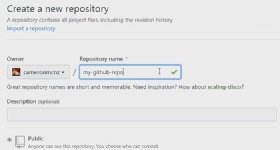

- #Git add remote history to new repo how to#
- #Git add remote history to new repo code#
- #Git add remote history to new repo trial#
Add the old repo as a remote and fetch it.
#Git add remote history to new repo how to#
The YouTube Video explains how to perform this last operation using GerritHub.io import Wizard.ĭo you require more help? Contact our Sales Departement at and we will provide the extra support you need or perform the migration for you to GerritHub.io. Yes, you should be able to use git rebase for this.
#Git add remote history to new repo code#
If you wish now to keep on using Gerrit Code Review for your Development Workflow, you can link your repository to Gerrit using GerritHub.io Your repository has not been fully migrated to your new target server. * refs/meta/config -> refs/meta/config Step 4 – Import into GerritHub.io (Optional) This config setting will use a commit history cache to significantly speed up history operations, such as git log with the -graph option, because the sorting is the time-consuming action of this command. * refs/changes/03/803/1 -> refs/changes/03/803/1 The mitgraph true config setting git config mitgraph true. You should never use this option when you have a “regular default clone” as you would risk removing all the remote refs that have not been typically cloned with a standard default “git clone” operation.Įxample for GitHub: $ git push -mirror objects: 109, done. Similarly to the clone, “–mirror” automatically include all refs, including the non-branch ones (tags, notes, reviews, configs, …) it provides the behaviour of removing all the refs that are not present in your local clone. You are now ready to push to the target repository, and we can use the useful option “–mirror” again. – Once the project is created, GitHub provides you with the repository Git URL (e.g. – Do not tick any of the suggested README or LICENSE auto-generation – Go to and create the ‘myrepo’ repository Note that most of the Git Servers propose you to create a first master branch with a README, but, in this case, you do not need it and it would only create more trouble in your migration path. You need to have an empty target repository where to push your mirrored local clone. Step 2 – Create empty repo on the new Git Server Remote: Total 109 (delta 19), reused 83 (delta 19) Instead of using a standard clone, you can do a “git clone –mirror”, which implies –bare and thus does not generate a working copy.Įxample: $ git clone -mirror into bare repository 'myrepo.git'. When you want to clone a repository for the purpose of migration, you really want everything, including all the other refs that are not branches:
#Git add remote history to new repo trial#
Now the issue you would be facing is: how to migrate somewhere else?Īlthough StackOverflow already contains over 800 response threads when asking this question we thought that giving a practical example based on a real-life GitEnt repository would allow you to avoid the trial & error discovery. We wrote yesterday about the shutdown due on April 30th, 2016.


 0 kommentar(er)
0 kommentar(er)
